Continuing discussion about different eras, started in previous post, let’s now direct our attention to TV era. In the light of American President elections and Obama’s data-based victory there are a lot of comments that TV times are about to end especially in sense of using it for advertising. Customers became more clever and selective; they don’t absorb “buy it” ads, interrupting their favorite TV-shows. But they still watch TV… and chatting on Facebook or posting to Twitter or checking the news… What kind of phenomenon is that?
It is called the “second screen”. Second screen experience is the process when you use your smartphone or tablet simultaneously with watching TV, which doesn’t fully capture your attention.
According Nielsen research nearly 40% of Americans now use tablets or smartphones while watching TV at least once a day; 62% do it multiple times each week.
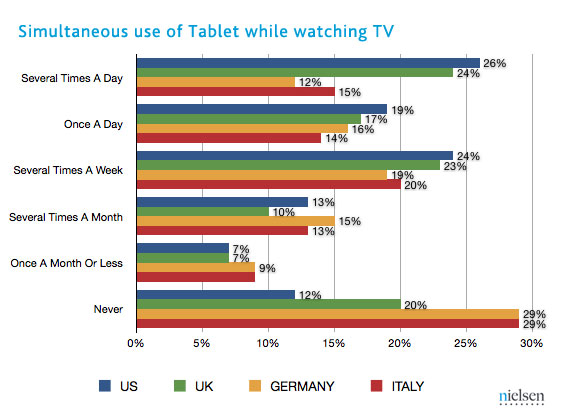
“Second screen” became the catalyzer, which turned passive TV-watching into shared experience, now called “social TV”. It enables viewers to go deeper into the story world, find necessary information about the product exactly when needed, share opinion, participate in discussion about what’s going on on the main screen in real time.
“Social TV” is new interesting tool, so how can it be used by marketers? Different studies suggest various combinations, let me mention some of them.
1) Engagement. Now TV viewers have another motivation to watch TV content – they can be rewarded through related Mobile apps. For example, during the basketball championship March Madness brand “Dove” Men+Care made a partnership with Viggle (the app rewarding for watching TV shows). When user was checking the broadcast, watching the game, he was re-directed to a Dove Men+Care page, where he could earn the extra points for watching Dove’s “Journey to Comfort” videos, involving basketball legend stars, such as Shaquille O’Neal.
2) TV gamifying. One more way to increase viewers involvement into TV ads absorption is to add gaming element, which is possible on the second screen. Great example is Coca-Cola’s “Chok” the app, which allowed users collect virtual bottle caps and then exchange them for digital goods, like mobile games. It worked in tight connection with the TV-commercial. Each time there was a music from Coca-Cola TV commercial, the app opened and offered users to shake a phone. Each “shake” was measured with the phones accelerometer and users were granted with the bottle caps.
3) Hashtags usage in TV commercials. By adding hashtags to TV commercial, brand can extend the commercial life beyond the main screen. It can lead to discussions in social networks and better customers’ involvement.
4) Synchronizing e-commerce with TV. Simultaneous watching and shopping was a dream for the whole history of TV commercials. Nowadays it may be possible. First steps in this direction were taken by eBay in the app “Watch With eBay”. By providing the information like zip code and cable provider and then accessing live auction, linked to what’s on the main screen, viewer is supposed to be able to purchase products, related to the movie star on the screen (Jessica Simpson brand T-shirt) or to the certain TV-show. There are still problems with algorithm of how to identify related products (now eBay app captures the whole stream and offer everything), but there is a real possibility for future.
There are many ways to extend the influence of social TV and there will be more other. So yes, traditional TV role in marketing has changed, but TV is not dying, it evolves, transforming its approach to viewers.
Several years in a row there are conversations about the transition from the desktop era to the mobile era. Someone calls it “Web 3.0: Mobile”, which came after the “Web 2.0: Social”. And it’s really so. Look around: with abundance of offers from different brands, everyone now owns a smartphone or a tablet, or electronic book with wireless connector, or all of that…
Recent research of Pew Research Center (PEJ) showed that half of all U.S. adults have a mobile connection to the web through different devices.
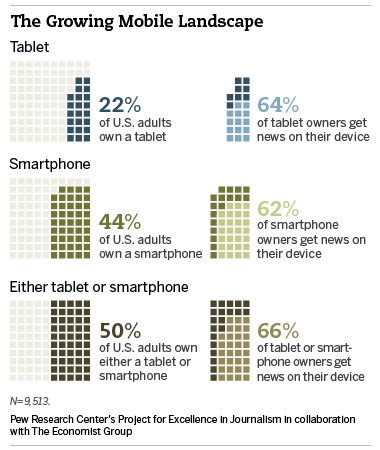
Impressive! So many opportunities for the business! With mobile there is a possibility to keep in touch with the client constantly. Why? Because mobile device gives a chance to reach the customer in real-time regime, anywhere, in easy way. More and more brands nowadays are using mobile approach, offering entertainment, location-based services, news delivery, electronic commerce, almost everything you can do using desktop. Mobile environment is a new field for marketing information gathering, advertising and involvement.
Everything is so great… Where is the “but”? It’s right here. And not the only one. Let’s consider some difficulties before we go down to mobile stream:
1) First of all, there is a problem to go smaller. Majority of leading businesses created entered Web world with PC-based approach, that’s why the web-pages contain so many elements. It’s different with small mobile phone screen. So now it’s a challenge for most of the companies to make a good mobile design, to tailor their web-pages for new micro environment, reduce amount of elements, but still be informative enough and attractive in usage.
2) Measurement is another issue. Recent Forrester research reveals that many marketers still use desktop metrics to measure mobile performance, instead of using new, tailored ones. For example, popular metrics are traditional advertising engagement metrics like website traffic and visitor number or click-through rates to measure mobile ad campaigns. But these are desktop metrics and they are not effective for mobile devices, where the “fat-finger” effect is quite popular occurrence.
3) Third point to consider is cultural or even economic. Some local brands should be careful in mobile ad campaigns financing, because mobile era has arrived, but mostly to developed word. Though many users in developing countries having the smartphone or tablet, it is still expensive to afford mobile Internet access. So research on such kind of market can show huge amount of mobile devices in use, but on-line marketing results won’t be so impressive.
4) And the last point to mention. There are various types of “mobile devices”, not talking about the brands or platforms, it’s important to separate smartphones and a tablets. Time of usage, content consumed, the environments and user behaviors are wildly different. This point should also be considered by marketers, going mobile.
Anyway, mobile era is what’s going on now. It behaves like an adult in Japan and North America, is still a teenager in Europe and just knocking to the developing countries’ door, but it has already arrived, so get prepared.
In this article 12 Top community managers shared several secrets of better engagement. And one of them was “to go offline” and try to attach your on-line fans to something physical and tangible. What should it be? Flashmob downtown? Free cup of coffee or painting contest?
Social networks decided for clothes. Why not? What can be more physical than a thing you can feel with your skin?
That is why Facebook has recently opened the company shop on its campus in Menlo Park, SF. According to TechCrunch, shop is called “Store” (without “the”) and sells T-shirts, hoodies, jackets and hats with company logo and name.
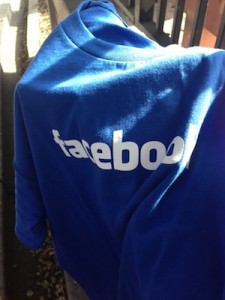
Strange that it took so much time for Facebook to open its store, because, for example, Foursquare has done that almost two years ago. A lot of similar swag can be found on their store website.

The same did Apple in its “Company Store” on Apple campus. Its t-shirts “I visited the Mothership” and “I visited the Apple campus. But that’s all I’m allowed to say” were must-have for all the Apple geeks the last several years.
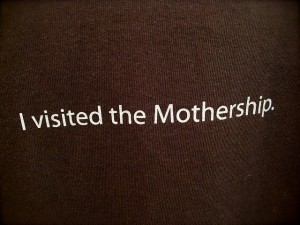

Why do they do it? First of all it’s a form of publicity for the brands, but it’s not the only reason. If these shops exist for several years already, there is a demand for this products, it means that these stuff helps loyal customers to express their love to the brand. Moreover, now employees of these companies can show how proud they are of what they do and whom they work with. And, of course, in the end it’s all about building the community, because you probably think about common interests, tastes or way of life being geek, when see someone in the same T-shirt as yourself. So, brand evangelists, that’s you whom they are trying so hard for.
“Who is John Galt?” – the famous opening line of Ayn Rand’s novel “Atlas Shrugged”. Only those who read all the three books in this trilogy know the answer. On the contrary, everyone in my E-marketing class knows, who Paul Cubbon is. He is a guy, who owns numerous amount of awesome indie T-shirts. Why am I talking about such random things? Because this post is about on-line based niche business, which combines literature and T-shirts and can be interested for guys like Paul.
Browsing around, I found the web-site of “Miles to Go”. It was started by Greg Kerr as one-man business, the on-line outlet of T-shirts, accessories and posters, designed under the influence of art and literature. Each T-shirt is a unique print, representing the cocktail of wearing and viewing pleasure, connected with novel name or certain character picture. Look at these masterpieces:
1) H. G. Wells’s “War of the Worlds

2) “On the Road” by Jack Kerouac

3) And my favorite “Brave New World” by Aldous Huxley

Promoted by the social media, such as Facebook, Twitter as well as through fashion blogs, this brand quickly gained popularity among book nerds and marginal fashion followers. Through his blog on the company web-page Greg Kerr is promoting his rock-band. So now “Miles to Go” is no more just a shop, it’s a philosophy, which turns its fans into the community of art hedonists.
Today’s TechCrunch article reveals another start-up, which went even further. Litographs puts the entire books on the T-shirts. The project creator came up with this beautiful idea working as a data analyst for a software company. Kickstarter gave a good word of mouth to this initiative. Let’s see what it is about:
So now your favorite novel can be printed in the shape of nice picture and be bought just for $30, what a miracle!
Paul, how do you like this? I would definitely order one!
Not just individuals, but each company now tries to be presented in as many social networks as possible. Facebook, Twitter, Instagram, Foursquare, Flickr, Printerest…you name it. Thousands of posts, pictures, tags… Human memory is short even if you post your life on-line by your own, but company profile is managed by bunch of employees. How not to get lost in informational ocean of changeable data and still remember all the traces you left to cover them in case of emergency? There is a new great solution for such a purpose called Recollect.
This is a tool, which helps to archive all the up-dates, photos, comments and other information related to the profile from the several social networks and gives a possibility to download it to the computer like a zip-file. Another interesting feature of this service is the ability to search through the data you downloaded. Though, there are some other tools, maintaining this function, as, for example, CloudMagic, discussed in this my post. For now there are four supported social networks: Twitter, Instagram, Foursquare and Flickr, but developers will expand this list adding some more, Facebook being the first in the line.
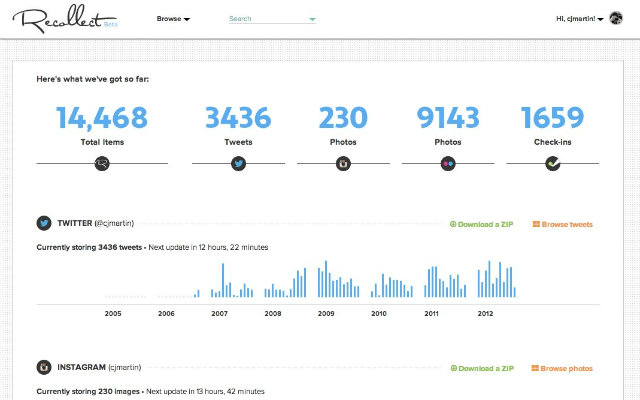
This is a paid service, price is charging per month and varies according the amount of data downloaded. Three monthly plans are available (from $6 till $24/month), first month being free. Combining with HootSuite, this service can be a good addition to keep the on-line life of the company under control.
President election is the huge event in the life of nation, isn’t it? Especially now, when there are so many opportunities to follow and to get involved. 2012 elections in the U.S. are intensively discussed on the news portals, in social networks, blogs etc. New media give so many possibilities! At the beginning of the year Google launched the elections hub for people to watch, learn and discuss the upcoming event, President Obama runs his own twitter under @BarackObama, Mashable discusses the possibility of voting on-line in its report , while U.S. government is already implementing this option for military or overseas voters.
Technologies create the brave new world of inexhaustible opportunities. According to Techcrunch, the 2008 election was about Facebook, while this year elections shifted to Twitter. What will come next? And how will new media change the nature of election campaign? Another article of Mashable is discussing the possible portrait of the candidate to the President in digital world of 2040. Let’s have a look at the problems he might face:
According to the video, if any potential candidate to 2040 presidential race uses Facebook as a place to socialize and share his thoughts, he automatically becomes unelectable. Because each careless comment or status post, each easy-going photo of his/her students’ years entertainment activities will be found and brought to the light during the possible election campaign of the future. Does it mean that everyone should be really attentive to the content he shares in the web, that it is important to carefully monitor all the digital movements of yourself. Well…it would certainly do no harm. But apparently Facebook and Twitter won’t have such a great influence in 28 years? First of all, they can simply retire till that time, or people will become social-media averse and sick of sharing. Another scenario, proposed by Mashable, is a new hypersocial media, where all the data (from foot size till real-time pulse rate) would be available. Also social norms and value can change completely, and things unacceptable nowadays will become usual in future.
No doubts, world is changing. And this digital “improvements” will touch every side of our life, including politics and election campaigns. There is no chance to control the information anymore, but smart political engineers will find the way to convert the danger of new media influence into the benefits for their candidates. For sure, on-line political campaigns will replace the more expensive TV advertising. Possibly, we will be able to watch the reality show describing the life of candidate in all the detail. Or, maybe, politicians will seek for the funds for their campaigns through projects like Kickstarter. Electorate is getting smarter. So who will win in 2040? The one who can provide the proper and up-to date communication.
It’s not a secret that relationship between customers and companies during recent years shifted significantly from companies’ dictatorship to customer control power. “Groundswell” the book made by Forrester Research describes a bunch of new methods, which are supposed to involve the company in qualitative relationship with customer. Talking is one of them. According to it, companies, instead of advertising, should use creative ways to approach the clients and to involve them into the communication. One of the popular approaches can be posting to blogs, creating videos or participation in social networks. But what if the social network itself needs to talk to the users? What method of communication should it use? And is it possible nowadays to convert a simple advertasing message into the instrument of two-sides communication? Through this post I want to show a bit different approach to Talking as one of the tactics of “new communication”.
Recently Facebook started the advertising campaign to approach the target market in 13 countries (Brazil, India, Indonesia, Mexico, Philippines etc), where it is not popular because of the technology gap or existence of local powerful social networks (for example, “Vkontakte” in Russia). Facebook released the video ad, aimed to show the things connecting people throughout the world. What can it be?
Chairs…Strange choice, isn’t it? But it actually works. Just a week passed, but Facebook already got feedbacks of different kinds, starting from the Are Chairs Like Facebook? web-page till the parody reply ad of the following content:
One could say that the original ad is just a shouting, unpopular technics of the past, which is aimed to deliver the message to as many people as possible. Nevertheless, though it is just an advertising video, it seems to be talking method, because talking creates conversation. And these re-posting, web-page response creations, video parodies are the conversation. Is it the good one – this is a question. But people talk about, people exchange the information and express opinion, though for now mostly negative.
Next step should be made by Facebook. It is interesting to see how it will respond to continue this conversation or to turn it to another, more favorable way.
Several years ago you could hear the question “Are you on Facebook?”. Today it probably is “How can I find you on Facebook?”. Do you have an account there or not is not a question anymore. Facebook nowadays is the “must have” for everyone. It’s the biggest contact book with 955 million users (June 2012) throughout the word and this amount continues to increase. Such a fast growth changed the character of this social platform, turning it from the small network for friends into the public library or inquiry office for long-lost relatives, random acquaintance or even strangers surfing around.
Why do we have an account on Facebook? “Sharing, giving and receiving”, isn’t it? And “sharing” – the major option of Facebook – is so easy. Just push the “post” button or tag a face. With such an amount of “friends” one needs to be careful of what to share. Of course, there are limitations of access, but it seems really time consuming to monitor your activity all day long. That is why many users of Facebook are decreasing their activity and switching to another way of sharing.
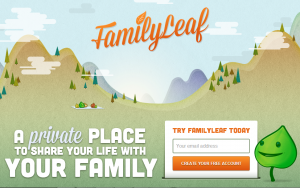 This new appeared issue created the background for so-called micro-social networks. These are services, which provide the possibility to share the information among people in small circle. The sharing therefore is becoming more intimate by nature. For now there are several platforms of such a kind. Pair, Path, FamilyLeaf, Kibits and newcomer Kidfolio are some of them. They are much more smaller then Facebook, Vkontakte (huge social network for Russian-speaking users around the world), Odnoklassniki etc. Path, for example, has a limitation of 150 friends. FamilyLeaf cover just close relatives and Pair is just for 2 users. Kidfolio is a service for parents to share the photos of kids, which can be organized in scrapbook timelines in chronological order.
This new appeared issue created the background for so-called micro-social networks. These are services, which provide the possibility to share the information among people in small circle. The sharing therefore is becoming more intimate by nature. For now there are several platforms of such a kind. Pair, Path, FamilyLeaf, Kibits and newcomer Kidfolio are some of them. They are much more smaller then Facebook, Vkontakte (huge social network for Russian-speaking users around the world), Odnoklassniki etc. Path, for example, has a limitation of 150 friends. FamilyLeaf cover just close relatives and Pair is just for 2 users. Kidfolio is a service for parents to share the photos of kids, which can be organized in scrapbook timelines in chronological order.
What are advantages of these small social networks? Of course, it’s simplicity. There are no complicated privacy settings, the interface is understandable and quite easy to use. What else? To my mind, using such an app, one won’t be overloaded with any kind of unnecessary and unrelated information from around. And the major advantage: you will never share the private things with wrong people.
I think these small social networks can become an attractive option for people who are sick of easy sharing and want to protect their personal space in the world where nothing is hidden anymore. Will these startups become successful? The time will show. It can be just a new toy, but who knows? Maybe the post-Facebook era is starting right now…
Today millions of people have their own place in the internet – from pages in social networks to huge storages in cloud services. With every new day the amount of information in the web is growing with faster and faster pace, so people’s personal spaces in the internet are getting overloaded with data. Isn’t it annoying when you’re surely know that some info is stored somewhere in one of your internet-based accounts but still you’re not able to find it.
Cross-platform perso nal search is not something unbelievably new and rare. One of the earliest projects is called Cue (former name Greplin) – the startup even got a $4 million investment from Sequoia Capital, but that didn’t make the company’s service do the job in the best possible way. Because of information overload in the search results the project was transformed into some kind of personal online secretary that divides all your data by days.
nal search is not something unbelievably new and rare. One of the earliest projects is called Cue (former name Greplin) – the startup even got a $4 million investment from Sequoia Capital, but that didn’t make the company’s service do the job in the best possible way. Because of information overload in the search results the project was transformed into some kind of personal online secretary that divides all your data by days.
Yet another personal cloud search solution named CloudMagic was developed in different way. Second generation includes extension for all the main personal data storage online services like Facebook, Dropbox, Evernote, Box, iCloud, AOL, Mail.com, GMX, and Office 365. Add to that list previously supported Google Docs, Google Contacts, Google Calendar, Microsoft Exchange, and Twitter and you will get the search engine for all your online stuff. Being focused on the search itself developers made applications for users of iOS (with particular iPad app) and Android operated devices (Kindle Fire as well). The service is also able to make a list of all your network updates so you don’t have to launch another web-page or app to stay in tune with e-mails and social networks.
CloudMagic’s video shows the typical ways of service’s usage and I’m still amazed by it.
Very often people lack of news about new projects and discoveries that can make everyday life more convenient. You can’t wait till “word of mouth” reaches you or endlessly look through different application stores and markets. So this is my “word of mouth”. Hope, it will help you.
 Hashtag #HandsOffYouTube (#РукиПрочьОтЮтуба) exploded Russian sector of twitter with the breaking news concerning the biggest video-sharing website YouTube. According to Kiev Post news portal , Communications Minister of Russian Federation Nikolay Nikiforov warned that Russia could officially block access to YouTube, because of the scandalous movie “Innocence of Muslims”, hosted by the website. This anti-Islam film, which makes fun of prophet Muhammed, has sparked riots in a number of Islamic countries, such as Pakistan, Bangladesh, India, Indonesia and Afghanistan, which already limited or blocked access to YouTube , “Times of India” reported .
Hashtag #HandsOffYouTube (#РукиПрочьОтЮтуба) exploded Russian sector of twitter with the breaking news concerning the biggest video-sharing website YouTube. According to Kiev Post news portal , Communications Minister of Russian Federation Nikolay Nikiforov warned that Russia could officially block access to YouTube, because of the scandalous movie “Innocence of Muslims”, hosted by the website. This anti-Islam film, which makes fun of prophet Muhammed, has sparked riots in a number of Islamic countries, such as Pakistan, Bangladesh, India, Indonesia and Afghanistan, which already limited or blocked access to YouTube , “Times of India” reported .
Islam is one of the traditional religion in Russia, as well as the Christianity, Judaism and Buddhism. 10 million people out of 143 million citizens of Russia are Muslims. Such a huge number makes Russian government worry about possible negative consequences of the free access to insulting video, which makes sense in terms of the powerful position of YouTube in nowadays information sector.
In the unlimited informational space random video can become a vigorous weapon with huge unpredictable effect. The good example of YouTube video influence was perfectly covered by the first episode of “Black Mirror” TV-project called “National Anthem”. There the short video of kidnapped member of the Royal Family, which appeared on YouTube only for 9 minutes and then was deleted, shook the whole country and put the Prime Minister into the shocking dilemma concerning the sexual intercourse on public.
Despite the fact of YouTube strong position and possible problems, caused by that, the idea of its shutting in Russia seems ridiculous, nevertheless, the decision of doing so will be taken on Nov. 3-5.
Interesting how one of the essential rights – right of free access to information – can be easily deprived from 143 millions of Russian citizens. In modern world information is a benefit accessible and owned by everyone. But who owns the information in Russia? And is this prevention step reasonable enough or it will cause more serious problems in future?

